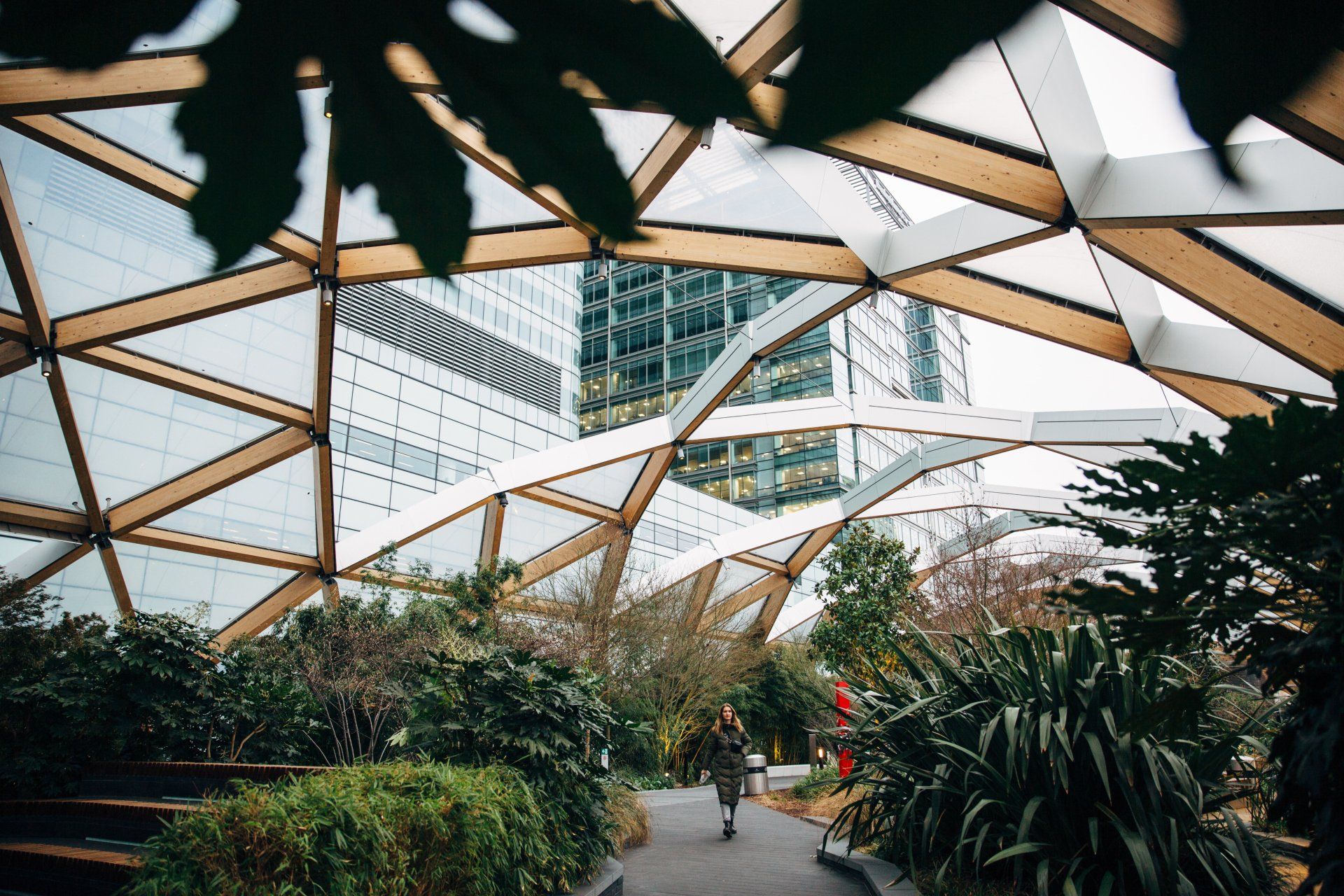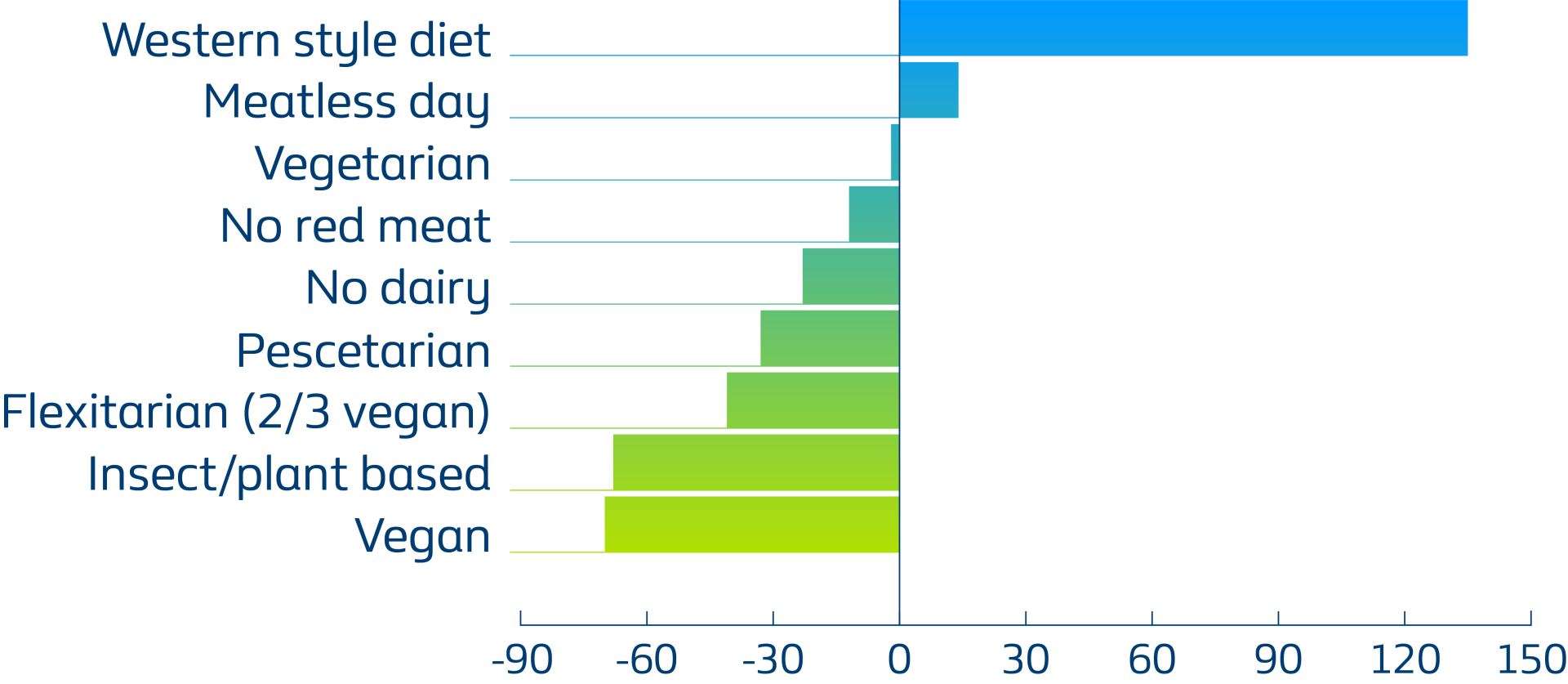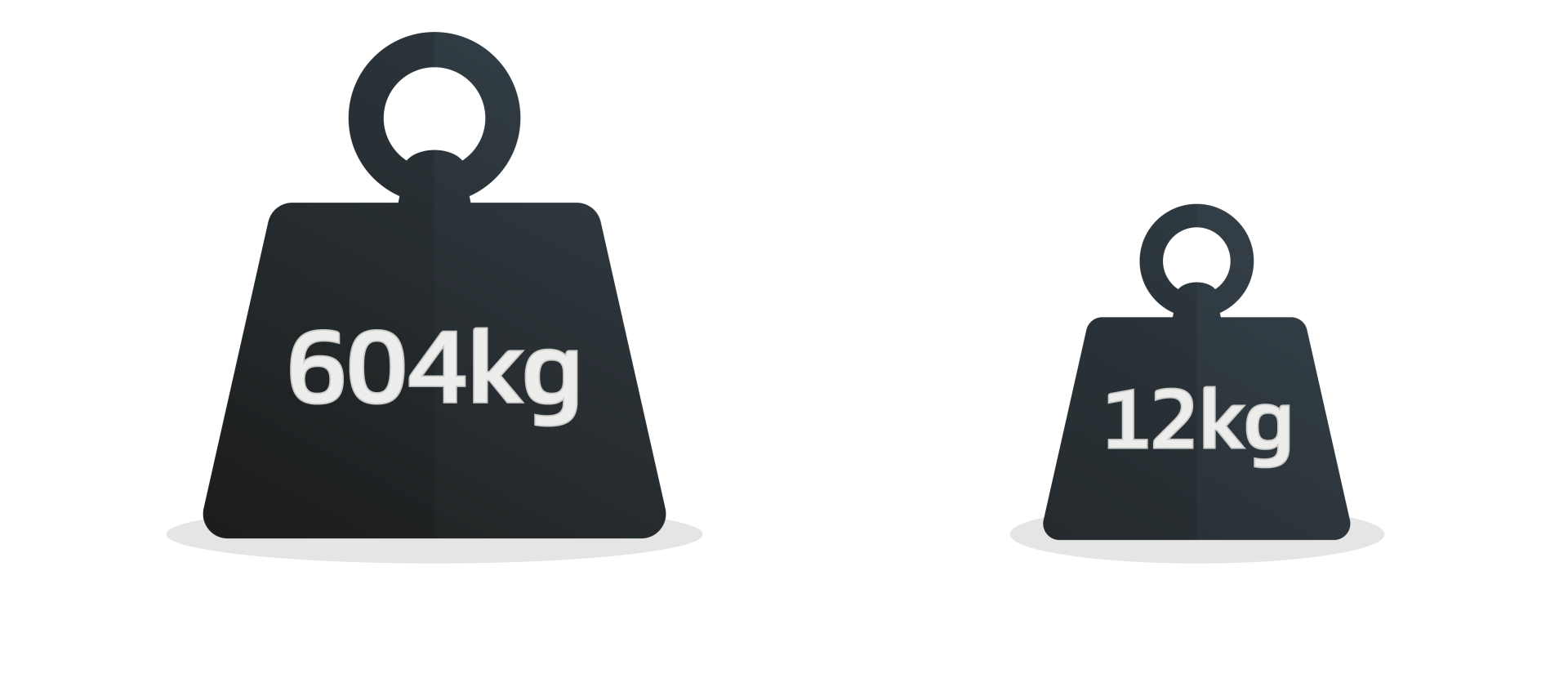Follow us
A plant-based diet might be the best way to save the planet. We take a look at the evidence.
As Veganuary 2020 comes to an end, we wanted to find out if ditching dairy and going meat-free is really the powerful climate-positive act we’re all told it is.
Once the butt of jokes about sandal-wearing, lentil-eating hippies, veganism is now the diet du jour. Celebrities like Joaquin Phoenix and Beyoncé have played a part in bringing meat-free and dairy-free diets to a wider audience – even KFC, McDonald’s and Greggs are getting involved. If 2019 was the year veganism stepped out of the shadows, 2020 will be the year it goes mainstream.
Not long ago, going vegan was seen as a hardline, even extreme, decision. Veganuary, the annual event that challenges meat eaters and veggies to go vegan for a month, is changing those perceptions. And it’s working:
1.31 million Brits gave up animal products in January 2019 (around 4.7% of the total adult population).
The battle for the vegan pound
Vegan diets, sometimes called plant-based diets, are a growing market. Orders for vegan meals grew
388% between 2016 and 2018, while the global market for vegan food is expected to hit
$24bn by 2026, growing at 9% every year. At the same time sales of meat and dairy products are
falling.
So why are people turning to veganism and cutting out meat, fish and dairy products? First, there’s the animal welfare argument – an estimated
3.6 million animal lives were saved in the six months following Veganuary 2019.
The second reason for going vegan is to fight climate change by reducing our food-related greenhouse gas emissions. Every year, around 2.6 million cattle, 10 million pigs, 14.5 million sheep and lambs, 80 million fish and 950 million birds are
killed for human consumption in the UK. Rearing and processing all of these animals creates colossal amounts of greenhouse gases.
604kg - Annual greenhouse gas emissions from
eating beef 1-2 times a week.
Digesting the evidence
Our diet is a major contributor to climate change –
quarter of global greenhouse gas emissions come from food production, with
58% of these emissions from animal products.
Switching to a plant-based diet
could reduce global CO2 emissions by as much as 8 GtCO2eq (gigatonnes of CO2 equivalent) per year by 2050. That’s a reduction of about 15% – the same as swapping every petrol and diesel car on earth with an electric vehicle. Other sources, like
research from Johns Hopkins University, say it could be as high as 70% - which could be a great step towards a more sustainable world.
Statistically, going vegan is better for the environment than a standard diet, but some questions remain. Demand for palm oil, an ingredient used in everything from cereal bars to medicines, is a major contribution to deforestation around the world. Shipping fresh food means using plastic packaging – but the waste it creates is clogging our oceans and
might be entering the food chain.
Much of our diet still relies on CO2-intensive airfreight to get it into supermarkets and on to our plates. Yet all of these problems apply to meat and dairy items too, not just vegan foods. Being 100% green means making some tricky decisions.
Food for thought
If you’re thinking of going vegan, start small – try a few meals a week and see how you go from there. Supermarket shelves are spilling over with plant-based options. It’s never been so easy to go vegan.
And if you’re not ready to bin the beef, you’re in luck. The UN has developed a flexitarian diet plan
to help feed a growing global population and keep greenhouse gas emissions at bay.
Will you be taking Veganuary beyond January? Has it made you think about your diet’s impact on the environment? Let us know in the comments below or drop us a line on Twitter.
Read more...

Wholesale energy prices have experienced unprecedented levels of volatility since the end of summer 2021, with both day ahead/spot and future contracts surging to all-time highs. In the last couple of months, prices have decreased but still remain high compared to a year ago. This period of high energy prices is expected to continue for the foreseeable future (see next section). Energy prices have surged for a number of reasons: A global increase in gas demand following the ease or end of Covid-related restrictions throughout 2021. After the pandemic, economies across the world started to recover. Asian countries like China saw their imports of Liquified Natural Gas (LNG) increase. This resulted in lower LNG shipments to the UK and Europe. On the supply side, the Covid-19 lockdowns pushed some maintenance work from 2020 into 2021 at a time when demand was recovering. In 2021, gas production hit a record low of 363TWh, 47TWh below the previous record low in 2013. Low production was the result of an extensive summer maintenance schedule which saw shutdowns at several major terminals, as well as the Forties Pipeline System which serves a significant proportion of UK gas and oil production. A lack of wind in the summer resulted in higher demand for conventional power. European gas storage in 2021 and Q1’22 remained far below previous years and it’s unclear how these are going to be replenished in the summer given the concerns around supply including the potential suspension of Russian gas flows due to sanctions. The 1,234km offshore Nord Stream 2 gas pipeline, which was designed to double the flow of gas between Russia and Germany (and by extension the rest of Europe) has been abandoned following the invasion of Ukraine. Gas storage in the UK is extremely minimal with capacity at less than 2% of the UK’s annual demand, compared with 22% for other European countries. Whilst the UK is not heavily reliant on gas coming from Russia, it sources almost half it’s gas supply from Europe. Hence, wholesale gas and power prices in the UK are now subject to knock-on-effects from the conflict in Ukraine.

Amidst rising energy costs, digitalisation, growing pressure from stakeholders and increasing regulation, organisations may struggle to define their pathway to a low-carbon future. What can you do to protect your business’ net zero plans from the challenges of volatility? Disruption and volatility are putting organisations under pressure. Digitalisation and new technology developments continue to challenge existing business models. Its increasing dependence on energy and encouraging businesses to drive change to secure competitive advantage. And as customers, employees and shareholders look to engage with companies who understand the importance of decarbonisation, pressure is mounting to prioritise sustainability.
Contact us
> Call now*
Call now to get an energy quote for your business
Large Business
Do you spend more than £100,000 a year on business energy?
Call now to find out how we can help you buy and use energy cost-efficiently

Wholesale energy prices have experienced unprecedented levels of volatility since the end of summer 2021, with both day ahead/spot and future contracts surging to all-time highs. In the last couple of months, prices have decreased but still remain high compared to a year ago. This period of high energy prices is expected to continue for the foreseeable future (see next section). Energy prices have surged for a number of reasons: A global increase in gas demand following the ease or end of Covid-related restrictions throughout 2021. After the pandemic, economies across the world started to recover. Asian countries like China saw their imports of Liquified Natural Gas (LNG) increase. This resulted in lower LNG shipments to the UK and Europe. On the supply side, the Covid-19 lockdowns pushed some maintenance work from 2020 into 2021 at a time when demand was recovering. In 2021, gas production hit a record low of 363TWh, 47TWh below the previous record low in 2013. Low production was the result of an extensive summer maintenance schedule which saw shutdowns at several major terminals, as well as the Forties Pipeline System which serves a significant proportion of UK gas and oil production. A lack of wind in the summer resulted in higher demand for conventional power. European gas storage in 2021 and Q1’22 remained far below previous years and it’s unclear how these are going to be replenished in the summer given the concerns around supply including the potential suspension of Russian gas flows due to sanctions. The 1,234km offshore Nord Stream 2 gas pipeline, which was designed to double the flow of gas between Russia and Germany (and by extension the rest of Europe) has been abandoned following the invasion of Ukraine. Gas storage in the UK is extremely minimal with capacity at less than 2% of the UK’s annual demand, compared with 22% for other European countries. Whilst the UK is not heavily reliant on gas coming from Russia, it sources almost half it’s gas supply from Europe. Hence, wholesale gas and power prices in the UK are now subject to knock-on-effects from the conflict in Ukraine.

Amidst rising energy costs, digitalisation, growing pressure from stakeholders and increasing regulation, organisations may struggle to define their pathway to a low-carbon future. What can you do to protect your business’ net zero plans from the challenges of volatility? Disruption and volatility are putting organisations under pressure. Digitalisation and new technology developments continue to challenge existing business models. Its increasing dependence on energy and encouraging businesses to drive change to secure competitive advantage. And as customers, employees and shareholders look to engage with companies who understand the importance of decarbonisation, pressure is mounting to prioritise sustainability.





